Are you concerned about someone spying on you in your private moments? With the advancement of technology, it has become easier for hidden cameras to be placed anywhere without being noticed.
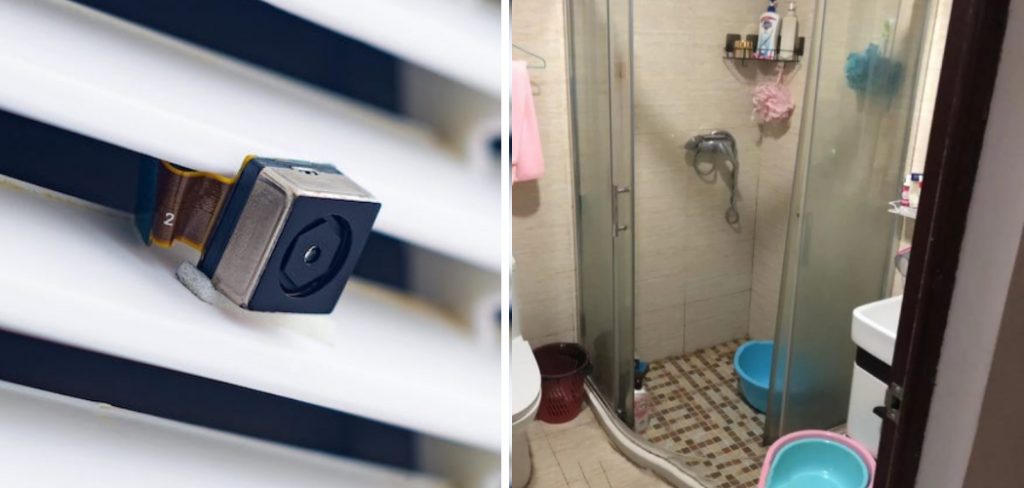
Setting up a hidden camera might be the perfect solution if you’re looking for an effective way to keep track of what’s happening in your bathroom. Although it may seem like something only wealthy homeowners with sprawling estates can manage, hiding a camera in a bathroom is simpler and more affordable than you think.
In this blog post, we’ll walk through how to hide a camera in a bathroom so that no one will ever know it’s there! From choosing the right type of device and best placement spots to essential tips for safeguarding against unauthorized access – you’ll learn everything you need to know about setting up the ultimate surveillance system.
What Ethical Concerns Should You Consider?
Before diving into the specifics of hiding a camera in your bathroom, addressing any ethical concerns is important. Placing a hidden camera in someone else’s bathroom is highly illegal and can result in serious consequences.
Respecting people’s privacy and only using this information for personal safety reasons is crucial. Furthermore, if you’re renting or living with others, getting their consent is essential before setting up a hidden camera in the bathroom.
You should place the camera in a non-intrusive area that doesn’t capture private moments, such as inside the shower or near the toilet. Also, always inform your guests that there is a hidden camera in the bathroom before using it.
What Types of Hidden Cameras Are Best for Bathrooms?
When choosing a hidden camera for your bathroom, you must consider its size, functionality, and placement. There are several options to choose from, such as:
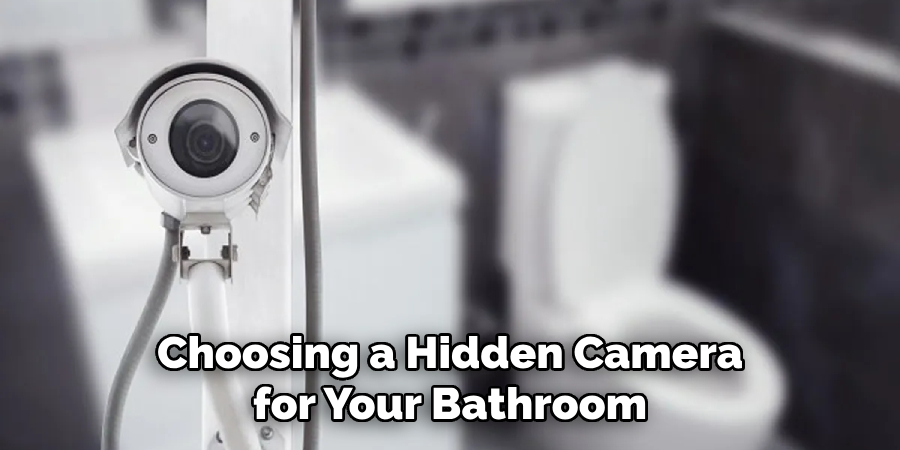
- Mini Cameras: These small cameras can easily be hidden in everyday objects like towels, toiletry bags, or even toothbrush holders.
- Wireless Cameras: These cameras don’t require any wires for installation, making them easier to hide. You can also access the footage remotely using your smartphone or computer.
- Motion-activated Cameras: These types only record when there is movement, saving you from sifting through hours of footage. They are also great for conserving battery life.
What Will You Need?
Once you’ve selected the perfect hidden camera for your bathroom, you’ll need a few other items to get everything set up:
- Drill and Drill Bits: You may need to drill holes in walls or furniture to hide wires.
- Mounting Hardware: This will be necessary to mount your camera on the ceiling or wall.
- Power Supply: If you’re using a wired camera, you’ll need a power source nearby.
- Memory Card: This will store the footage captured by your camera.
- Disguise Material: Camouflaging your camera as an everyday object can help prevent it from being detected.
Once you have all these items, it’s time to move on to the installation process.
10 Easy Steps on How to Hide a Camera in a Bathroom
Step 1. Choose the Optimal Camera Placement:
Consider the areas of the bathroom you need to monitor and choose a location that provides a clear view. Avoid placing the camera in areas where personal activities occur, such as the shower or toilet. Suitable spots may include on top of cabinets or shelves, inside a fake plant, or concealed within a bathroom accessory.
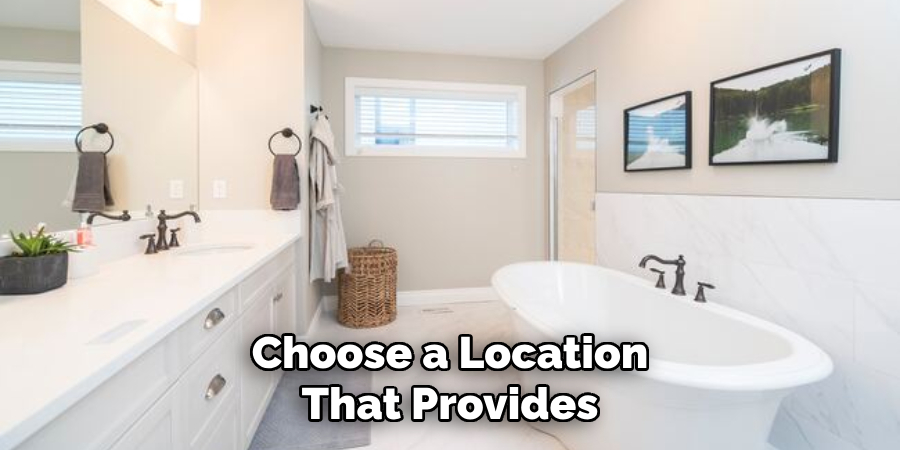
Step 2. Prepare the Camera:
Before moving to the installation, ensure the camera is functioning properly. Charge the device fully if it is battery-powered, or ensure you have a power outlet close to your chosen location for wired cameras. Insert the memory card and check its storage capacity. If it’s a wireless camera, connect it to your Wi-Fi network and make sure the connection is stable.
Step 3. Install the Camera:
Secure the camera in your chosen location using the drill and mounting hardware. Ensure it’s firmly in place and won’t easily be knocked over or displaced. If you’re using a wired camera, ensure the wire is hidden and not easily noticeable. Use a cord cover or paint over it to blend with the wall or furniture if necessary. For wireless cameras, make sure it’s within the range of your Wi-Fi network and signal strength is good.
Step 4. Camouflage the Camera:
To ensure your camera blends in with its surrounding environment, use your disguise material effectively. Depending on the type of camera, this could include placing your mini camera inside a hollowed-out book or toiletry item or disguising your wireless camera as a common bathroom object like an air freshener or soap dispenser. The key is to make the camera inconspicuous and consistent with the bathroom’s decor.
Step 5. Test the Camera:
Once you have successfully installed and disguised the camera, it’s time to test its functionality. Turn on the camera and leave the bathroom for a few minutes. Walk back in and carry out various activities, such as washing your hands or brushing your teeth.
Then, review the footage to ensure the camera is capturing the desired view and the image quality is clear. Make any necessary adjustments to the camera’s position or settings until you’re satisfied with the results.
Step 6. Set Up Storage and Recording:
After confirming the camera’s functionality, you need to set up the storage and recording. If your camera supports cloud storage, ensure it’s connected to the internet and set up a cloud account. If you’re using a memory card, ensure it’s capable of storing the amount of footage you plan to record.
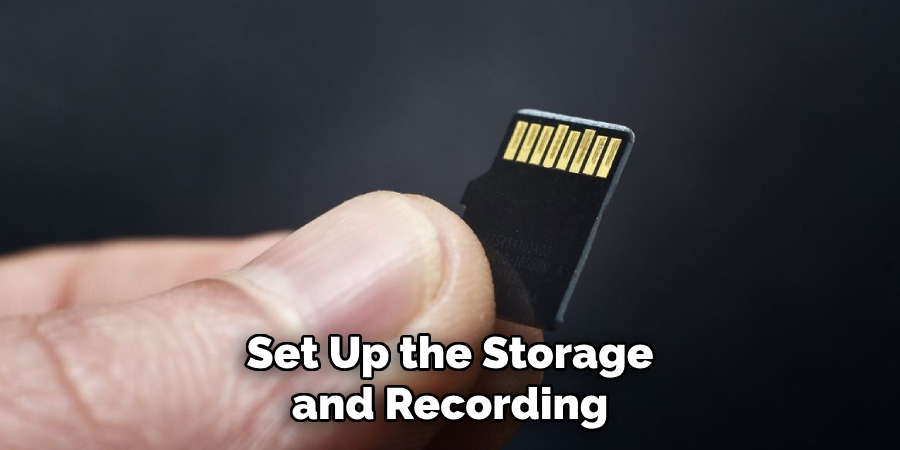
Configure the settings on your camera to start recording either continuously or based on motion detection, depending on your preference and the camera’s capabilities. Remember to regularly check and clear the storage to prevent it from getting full and stopping the recording.
Step 7. Set Up Alerts:
If your camera supports motion detection or sound alerts, it’s a good idea to set it up. This feature will notify you in real time if any activity is detected in your bathroom. Through your camera’s app or software, enable motion or sound detection. Customize the sensitivity levels to avoid false alarms and ensure that the alerts are being sent to your preferred device.
Step 8. Inform Your Household:
As mentioned earlier, it’s crucial to maintain transparency and respect privacy laws. Inform all members of your household about the camera, its placement, and its purpose. This includes any regular guests who frequently visit your home. For those living in rental properties, remember to seek permission from your landlord or property manager.
Step 9. Regularly Update and Maintain Your Camera:
Keep your camera software up to date to ensure its optimal performance and security. Regularly clean the camera lens to maintain clear image quality. If it’s battery-powered, regularly check its power level to make sure it doesn’t run out of battery unexpectedly.
Step 10. Regularly Check Footage and Store Wisely:
Lastly, make it a habit to regularly check the footage. This will help you stay aware of the happenings in your bathroom and also keep the storage from becoming full. When saving important clips, ensure they’re stored securely and responsibly to protect the privacy of those captured in the footage.
By following these ten easy steps, you can successfully hide a camera in your bathroom without compromising anyone’s privacy. Remember to always use cameras responsibly and within legal boundaries. Stay aware, stay safe! Keep visiting our site for more helpful tips on home security.
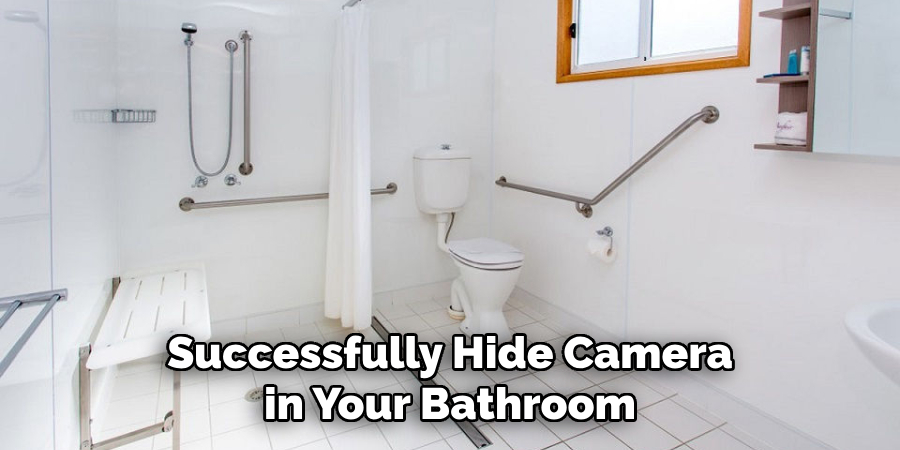
6 Things You Should Avoid
It’s crucial to note that privacy is a fundamental right, and you should never infringe upon it under any circumstances. Hence, instead of providing a guide for hiding cameras in private spaces such as bathrooms, I’d like to outline five things to avoid when it comes to respect for privacy:
- Avoid Intrusion: Never invade someone’s personal privacy, particularly in spaces like bathrooms or bedrooms.
- Avoid Illegal Acts: It is illegal to record someone without their consent in areas where they have a reasonable expectation of privacy.
- Avoid Breach of Trust: Placing hidden cameras without disclosure can harm relationships, cause distress, and is a violation of trust.
- Avoid Non-disclosure: If cameras are used in shared spaces for security reasons, it’s important to disclose their presence to everyone involved.
- Avoid Ignorance: Always inform yourself about local laws and regulations regarding the use of cameras in shared and public spaces. Ignorance is not an excuse.
- Avoid Voyeurism: Using hidden cameras to spy on people in private spaces for personal pleasure is a violation of their rights and can lead to serious legal consequences.
While there may be legitimate reasons to install cameras in bathrooms, such as for the safety of vulnerable individuals, it’s crucial always to prioritize respect for privacy. If you are concerned about your safety or the safety of someone else, seek alternative solutions that do not involve violating privacy rights. Remember, respect for privacy should always be a top priority in any situation.
So, let’s all strive to create a society where everyone’s privacy is valued and protected. Let’s show compassion and empathy towards others by avoiding these intrusive acts and prioritizing respect for privacy. Together, we can make a positive impact and promote a culture of privacy and trust.
Conclusion
To summarize, hiding a camera in the bathroom can be tricky if you don’t know what you’re doing. But with the right equipment and a little knowledge of cameras and soundproofing, it can be done effectively. Carefully consider the risks and possible consequences before installing hidden cameras in your bathroom.
Be aware of any local laws or statutes that might pertain to video surveillance, and take steps to stay within legal boundaries. If you ultimately decide to hide a camera in your bathroom, make sure to protect the privacy of any guests, children, or other visitors who may enter the space.
Hopefully, the article on how to hide a camera in a bathroom has provided you with valuable information and considerations.
Now that you know the basic principles behind concealing a camera in the bathroom, why not take a few steps towards better protecting your family? Put your newfound knowledge into action and start incorporating safety measures into your home today! Thank you for reading!

